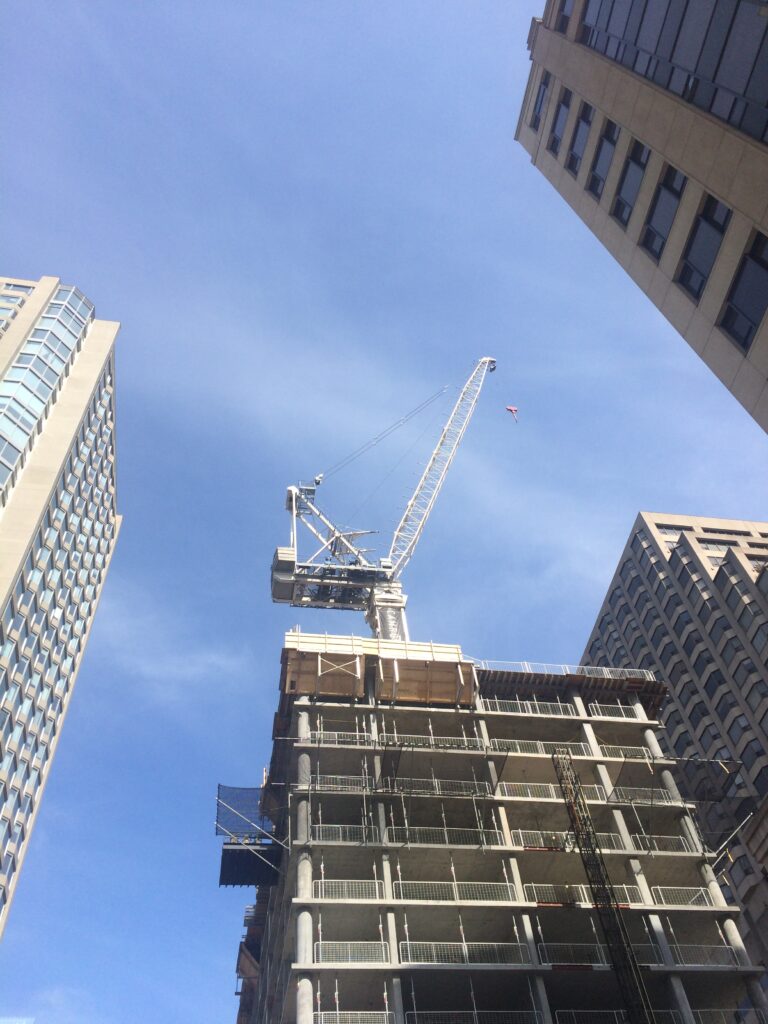
Canadian Construction 2023 Outlook
May 9, 2023 | By Simon J. Fenn
Many of the key issues – supply chain delays, rising materials costs, labour shortages – will continue to affect the market in 2023.

In today’s volatile economy, success isn’t guaranteed.
Many of the key issues – supply chain delays, rising materials costs, labour shortages – will continue to affect the market in 2023. Continued unpredictability will make it a challenge to manage costs and schedules, and will likely lead to slimmer profit margins.
Yet firms with a well-developed risk management and insurance strategy are more likely to remain profitable and resilient – especially if they take the opportunity to confront the labour shortage head on and make changes to attract the right workers to join their teams.
Maintaining Profitability
All signs point toward a slowdown of the construction industry. With inflation hitting milestones and interest rates rising, new construction is expected to slow across the board. Prices for plastic and rubber broke records last year, growing 19% in the first quarter of 2022. The price of copper has been somewhat volatile, and ongoing materials shortages continue to hamper building and profits.
The labour shortage is another major challenge, especially with Baby Boomers continuing to retire in the next several years. Skilled tradespeople are in short supply. In addition, with three out of four Canadians certain they would never join the skilled trades, the shortage will likely get worse before it gets better.
On the plus side, the industry is increasingly utilizing new digital solutions to optimize operations and risk management. This openness to technology does open the door to cyber risk, but the data analytics that come from this adoption can also boost performance and reduce risk across the board. As a result, insurance rates have begun to stabilize, although cyber insurance coverage is expected to remain elevated at 20% to 40% higher than last year.
Renewing Vitality
Nearly all industries are struggling to attract and retain talent today. Yet the construction industry has been harder hit than most, with roughly 77,000 job vacancies in late 2022. Many firms are having difficulty finding qualified workers, and, unfortunately, skilled workers aren’t made overnight.
Contracting companies that introduce strong benefits packages and focus on creating safe workplaces will do a better job attracting and retaining workers.
Some firms are offering dental and paramedical benefits, as well as paid leave and employer-sponsored retirement plans, to qualified workers. The government is adding extra incentives, with programs designed to encourage the hiring of first-year Red Seal apprentices.
 Building Resilience
Building Resilience
After the ups and downs of the last several years, the construction insurance market is stabilizing and rates remain relatively steady – with the exception of some higher hazard classes.
Yet expectations have increased: carriers are looking for certain risk mitigation measures, such as water shutoffs, video surveillance and additional security provisions.
Higher interest rates and inflation over the next year may lead to an increase in subcontractor default. Savvy contractors will understand the importance of closing those exposure gaps through insurance policies and carefully selecting partners who do the same.
Construction firms, for their part, will also be focusing on mitigating risk. It will be a good idea to require additional worker training in order to reduce accidents and injuries on site. This will also help avoid the ever-increasing health and safety, and other regulators’ fines and penalties.
Job sites may need to invest in technology to reduce the risk of flood and fire. And some firms will become more open to alternative materials to alleviate some of the supply chain issues and pricing concerns while advancing sustainability.
Going High-Tech
Although the industry has put it off as long as possible, even mechanical contractors are now adopting digital solutions for their businesses.
Automated building techniques are becoming more popular, for example. The City of Toronto has a swimming robot to help safely maintain sewer pipes by revealing potential issues. Wearables, such as smart helmets and exosuits, are keeping workers safe and efficient.
And while these advances improve productivity, reduce workplace accidents and address the labour shortage, they also make the industry more vulnerable to cybercrime. Contractors and contracting firms will need to develop a technology plan, including regular training and multi-factor security protocols, to protect themselves.
Make a Plan
In 2023, good things don’t just come to those who wait. Set your firm up for success by developing a plan. Here are some initial considerations:
- Offer personalized benefits for your team. In a world where skilled workers are rare, attract the best and most capable to your organization through the right benefits package. Workers who have healthcare, sick days and paid time off are more likely to stick around, knowing their employer cares about their safety and wellbeing.
- Understand your organization’s risk profile. A construction company doesn’t operate independently. It works closely with contractors and vendors, among others, to achieve a goal. Yet each of these partners adds risk. Be sure you pre-qualify contractors to ensure they share the same standards of safety and risk management that you do. And work with an expert to be sure you have enough insurance to protect your organization as a whole.
- Develop a formal training program – and implement it. While safety is a major concern for many firms, it’s no question that proper training reduces incidents and improves retention. Make safety an important value of the organization, and be sure workers understand that commitment. Set clear and achievable expectations and follow them.
- Work with – not against – your broker. Your broker is a valuable member of your team. Be sure all team members know and understand your company policies and practices so it’s easy to identify the best coverage options. Despite the market challenges, a new or renewal insurance policy is achievable after solid planning. Start at least 90 days prior to insurance policy renewal to review your insurance needs and carefully review the options. This also offers an opportunity to make changes to risk management practices in order to secure a stronger option.

 Simon
Simon


